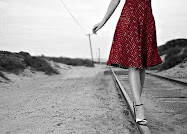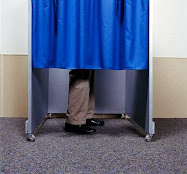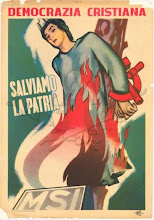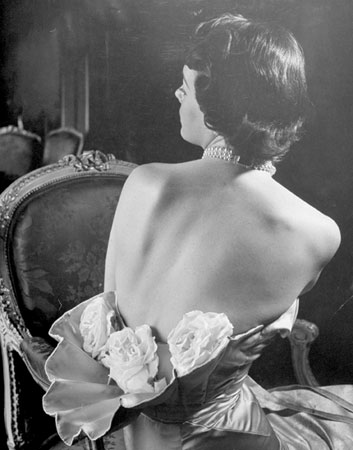
Every week, Air Force cargo jets land and taxi down the runway at Dover Air Force Base, Del., carrying the remains of fallen U.S. troops. After a chaplain says a simple prayer, an eight-man military honor guard removes the metal "transfer cases" from the planes and carries them to a mortuary van.
The flag-draped coffins are a testament to the toll of the conflicts in Iraq and Afghanistan, as well as to the sacrifice borne by those who serve in the military and their families. But this ceremony, known as the "dignified transfer of remains" and performed nearly 5,000 times since the start of the wars, is hidden from the American public view by the Pentagon.
President Obama said last week that he is considering lifting the ban on photographs and videos at Dover, in place since the Persian Gulf War in 1991, raising fundamental questions about the impact of such images on the public morale in wartime.
For Obama, changing the policy would carry some political risk as he ramps up the war effort in Afghanistan with tens of thousands of fresh troops, increasing the likelihood of combat deaths that could produce photographs of numerous coffins arriving at one time at Dover, the sole U.S. port of entry for the remains. At the same time, Obama has advocated transparency in government, and continuing to hide the Dover ritual from public view conflicts with that principle as well as with public opinion on the issue, polls indicate.
"Showing these pictures would remind people of the war," said S. Robert Lichter, director of the Center for Media and Public Affairs at George Mason University. But he added that "what turns people against a war is not knowledge that Americans are dying but the belief that they are not dying for something" worthwhile.
A majority of Americans favor allowing the public to see pictures of the military honor guard receiving the war dead at Dover, with about 60 percent responding positively and a third answering negatively in polls posing the question in 1991 and 2004.
Some families of fallen troops also support allowing the news media to photograph and videotape the ceremony, or at least letting the families decide whether to permit it rather than continuing the government ban.
"I would have loved to see them fly my son back in and give him a full salute," said Janice Chance of Owings Mills, Md., whose son, Marine Capt. Jesse Melton III, was killed Sept. 9 in Afghanistan's Parwan province. She said she is in favor of media coverage of the return ceremony.
"As long as it is done in good taste, and they are showing that the people here in the United States are welcoming them back and saying job well done, that is what I would like to see," she said.
Ralph Begleiter, a former CNN correspondent and WTOP radio reporter who teaches journalism and politics at the University of Delaware, has sued the government to obtain the release of some military photographs of honor ceremonies at Dover under the Freedom of Information Act.
"Dover is the only place in the country where the entire nation can observe the return of these casualties," Begleiter said. "The most important and dramatic . . . cost of war is the casualties, the troops who make the ultimate sacrifice and come back to their country in a casket draped with an American flag, and to leave that image unobserved seems to be disingenuous."
Other family members strongly disagreed, however, saying they felt media coverage would allow their lost loved ones to be politically exploited.
"This is very much Democratically driven to make it available to the public so they can publicize the negative side of the war and show the American public there is a high cost to be paid here," said Cal Peters, whose stepson, Marine Capt. Garret Lawton, died Aug. 4 in Afghanistan. "I think this is the ultimate disrespect."
Defense Secretary Robert M. Gates expects a review of the issue back within days, Pentagon press secretary Geoff Morrell said Friday. Gates is seeking "a way to better balance an individual family's privacy concerns with the right of the American people to honor these fallen heroes" and "is disposed, leaning, tilting towards trying to do more, if possible" to allow coverage of the ceremony, Morrell said.
At Arlington National Cemetery, the next of kin of the deceased service member decide whether to allow coverage by news reporters and photographers, who are kept far enough from the mourners so they cannot hear what is being said.
That policy "has worked well," said John C. Metzler Jr., the cemetery's superintendent. "Obviously it is traumatic, but how the military does it, with the precision and respect, is a very positive thing. I think the public also looks at it as positive."
Pictures of casualties have long played into the politics of a war -- most notably in Vietnam, dubbed the "living-room war" for its extensive television coverage, including footage of coffins rolling off planes at Hickam Air Force Base in Hawaii as if off a conveyor belt.
President George H.W. Bush's administration imposed the ban on media coverage of the arrival of fallen troops' remains at Dover Air Force Base during the Gulf War in February 1991. It came about after a controversy arose when Bush held a news conference at the same moment the first U.S. casualties were returning to Dover the day after the U.S. invasion of Panama in 1989, and three television networks carried the events live on split screen, with Bush appearing at one point to joke while on the opposite screen the solemn ceremony unfolded at the Delaware base.
Indeed, starting in the 1990s, politicians and generals used the term "the Dover test" to describe the public's tolerance for troop casualties.
Still, experts say that if images can shape public sentiment about a war, they rarely do so alone. Instead, their role in influencing opinion usually depends on the broader political narrative on whether the war is worth the cost, Lichter said.
"On Afghanistan, the public believes this is a war we must fight," Lichter said. "This is where we fight the Taliban, this is where we fight the terrorists," he said. "So for the images to have an impact from Afghanistan, someone would have to link those images to a narrative of futility . . . that it's a quagmire."
Both Republican and Democratic administrations have upheld the Dover ban, but both have also made notable exceptions, which some observers view as politically expedient. For example, under President Bill Clinton in October 2000, the Pentagon distributed photographs of coffins arriving at Dover bearing the remains of military personnel killed in the bombing of the USS Cole.
John Clodfelter lost his son, Hull Maintenance Technician 3rd Class Kenneth Clodfelter, in the Cole attack and supports lifting the ban. "When our son's remains were returned up at Dover, there were several caskets that came off the plane, and you couldn't tell which was Kenneth and which one was not Kenneth," he said. As for whether news personnel should be allowed to cover the transfer, he said, "I don't have a problem with it myself, as long as they are at a respectable distance."
Clodfelter said he did not believe such coverage would spur antiwar sentiment among Americans. "If anything, I would hope that they would go ahead and feel sympathy for the families," he said. "The people really need to understand that, hey, lives are being lost for you, to be able to get these people that are trying to kill our loved ones. The American military does so much for us, it's unreal, and people really do not appreciate it at all."
Exceptions were also made under President George W. Bush, such as in September 2001 when the Air Force published a photo of the transfer at Dover of the remains of a victim of the terrorist attack on the Pentagon.
"When it was in the government's interest, they allowed photographers to take pictures," said Meredith Fuchs, general counsel to the National Security Archive, which provided legal representation for the Begleiter lawsuit that led the Pentagon to release in 2005 hundreds of photographs taken by government photographers. "They wanted us to be angry over a terrorist attack," she said.
Soon after the war in Afghanistan started in October 2001, however, the Pentagon restated the ban on coverage at Dover, and in March 2003, the same month that the U.S. military invaded Iraq, it expanded the policy prohibiting media coverage of the coffins of fallen troops to other ports of arrival as well.
By Ann Scott Tyson and Mark Berman
Washington Post Staff Writers
Tuesday, February 17, 2009; A01
Staff researcher Julie Tate contributed to this report.



















